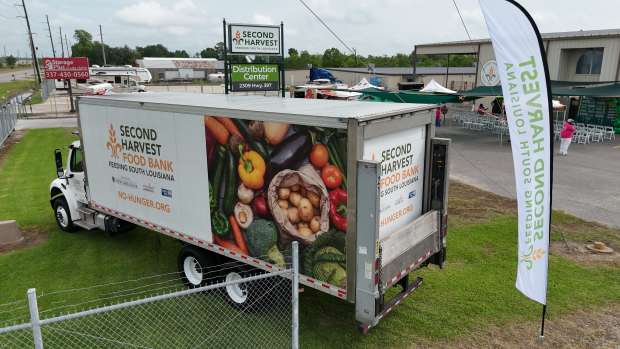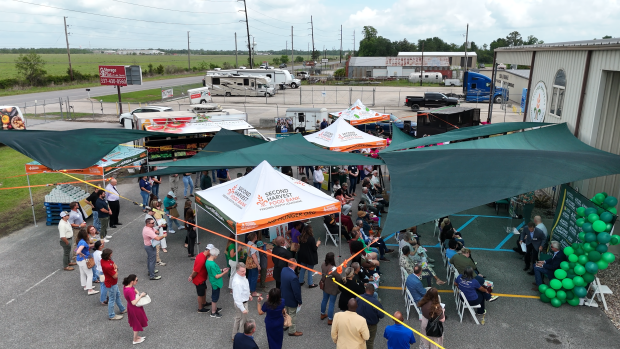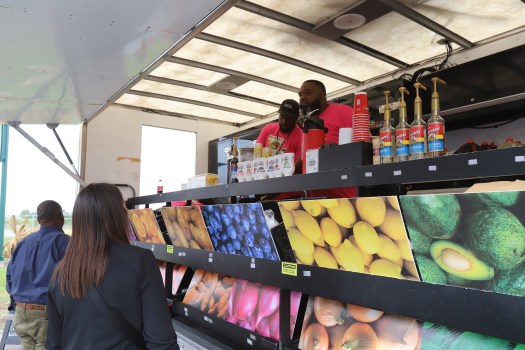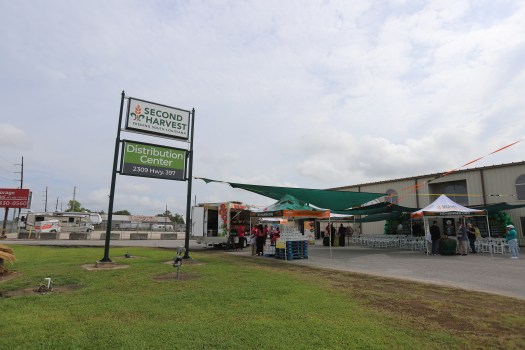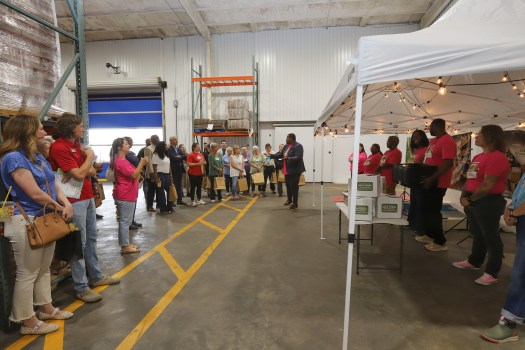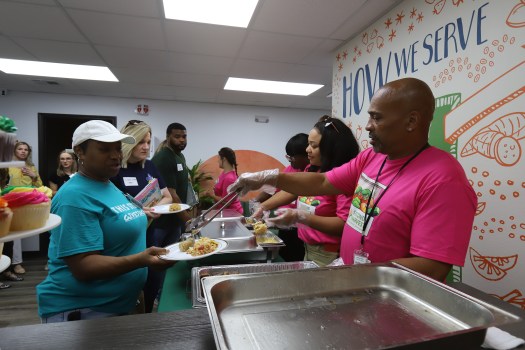Second Harvest Distribution Center opens
Published 4:01 pm Friday, May 2, 2025
Second Harvest Food Bank is now even more equipped to battle food insecurity in Southwest Louisiana.
The Southwest Louisiana Distribution Center opened on Friday on La. 397. The grand opening was celebrated with a performance by the Barbe High School show choir, giveaways and a tour of the 24,000 square-foot facility.
With refrigeration and freezer space and the surface area to store up to 450 pallets of pantry items, the multi-million dollar distribution center will increase the food bank’s delivery capacity to 8 million pounds of food annually. This amount of food will meet 80 percent of food assistance needs in Calcasieu Parish, where 21,000 people do not eat at least 170 meals a year.
This is the third Second Harvest distribution center to operate in Louisiana, with a fourth one set to open later this month in the Houma area, said Jon Toups, president and CEO of Second Harvest Food Bank of Greater New Orleans and Acadiana. Two other distribution centers are in the New Orleans and Lafayette areas.
The new distribution center is a “long time coming” that has only been possible through partnership.
Feeding a community
Second Harvest Food Bank was established in 1982 to eradicate hunger in South Louisiana. Forty-three years later, the organization operates in 23 parishes.
About 430,000 people in those 23 parishes face food insecurity, which Toups said is “nothing more than anxiety around where the next meal will come from.”
This can happen to anybody, he added. “This could be a senior. This could be a veteran. This could be a child. This could be family.”
Southwest Louisiana stepped up to the plate to join the mission.
About 3.4 million meals were distributed in Southwest Louisiana in 2024 — more than 2.5 million of these meals were handed out in Calcasieu Parish. This is a feat that could only be accomplished with a passionate community, said Bill Hoffman, board president of Second Harvest Food Bank of Greater New Orleans & Acadiana Board of Directors.
There is a network of volunteers and 30 “pantry partners” supporting Second Harvest in the region, and 200 across all of South Louisiana.
“We can provide money and we can provide buildings, but we can’t reach out and touch everybody.”
Second Harvest’s reach has range. Bulk food is distributed through a web of mutually beneficial partnerships. The center, which has a backup generator, will serve the community during major emergencies and disasters, but this is a role Second Harvest has always played.
Lake Charles Mayor Nic Hunter recalled not only how Second Harvest has responded during disasters like Hurricanes Laura and Delta, but also during the every-day hunger challenges. It operates as a shelter during severe weather events and supports the city’s after-school programs. Those at Second Harvest also help by picking up the phone.
“People have been fed because I called Second Harvest, and at the turn of a minute, they were there with food to provide for those people in need,” Hunter said.
McNeese President Wade Rousse is also well acquainted with Second Harvest’s local impact. The food bank and McNeese State University partnered to establish the McNeese Community Kitchen in 2022. The kitchen allows Second Harvest to enhance its services with cooked meals and McNeese to enhance its nutrition curriculum with a fully-functional kitchen.
Providing food to Southwest Louisiana aligns with McNeese’s mission to provide the premier higher educational experience in Louisiana and Southeast Texas. Students can’t enjoy this experience, excel in school and enter the workforce without their basic needs met, he said.
“We can’t do any of that if we have students on our campus who are worried bout their next meal.”
Expansion
Toups said this is just the beginning of the journey. There are 20 more organizations on the waiting list to become pantry partners and further expansions have already been discussed. Looking forward, he envisions Second Harvest distributing more hot meals to the area.
This is already in the works. The food bank has been discussing the possibility of a new facility that would serve as a kitchen, as well as an education center. It would facilitate the production of hot meals and have meeting space for farmers and food producers, he said.
The facility would solidify Second Harvest’s capability to meet community needs, including disaster-related needs.
“When disaster hits, having a kitchen, a place for people to go for hot meals, makes a big difference.”
Food shortages
The shelves in the new distribution were more barren than they would usually be, Toups noted.
Second Harvest is “significantly struggling with food shortages” following funding freezes at the federal level. The food bank is seeing its food supplies cut back, leaving leadership to make “tougher decisions.” He said they do have the capabilities to maintain their current operations, but that takes money.
One of the basic human fundamental rights is access to food, he said, and right now that access is teetering on the line of crisis, he said.
“While I understand and can even appreciate cutting out waste and fraud. … feeding people, especially in South Louisiana … that’s not fraud. That’s not wasting.”
How to help
Residents are integral cogs in the hunger-fighting machine, and there are three main ways they can help: awareness, donations and manpower.
This year alone, the volunteer hours logged for Second Harvest are the equivalent of 30 to 35 full-time employees. Financial donations, be it from an individual or a Fortune 500 company, help keep the food bank up and running.
But nothing makes more of an impact than spreading the good word, Toups said. Awareness is not only necessary to spotlight the severity of food insecurity, but also to let people know where to go if they need help themselves.
“Telling our story, that’s truly the way to get involved.”
For more information on Second Harvest or to donate, visit www.no-hunger.org.

